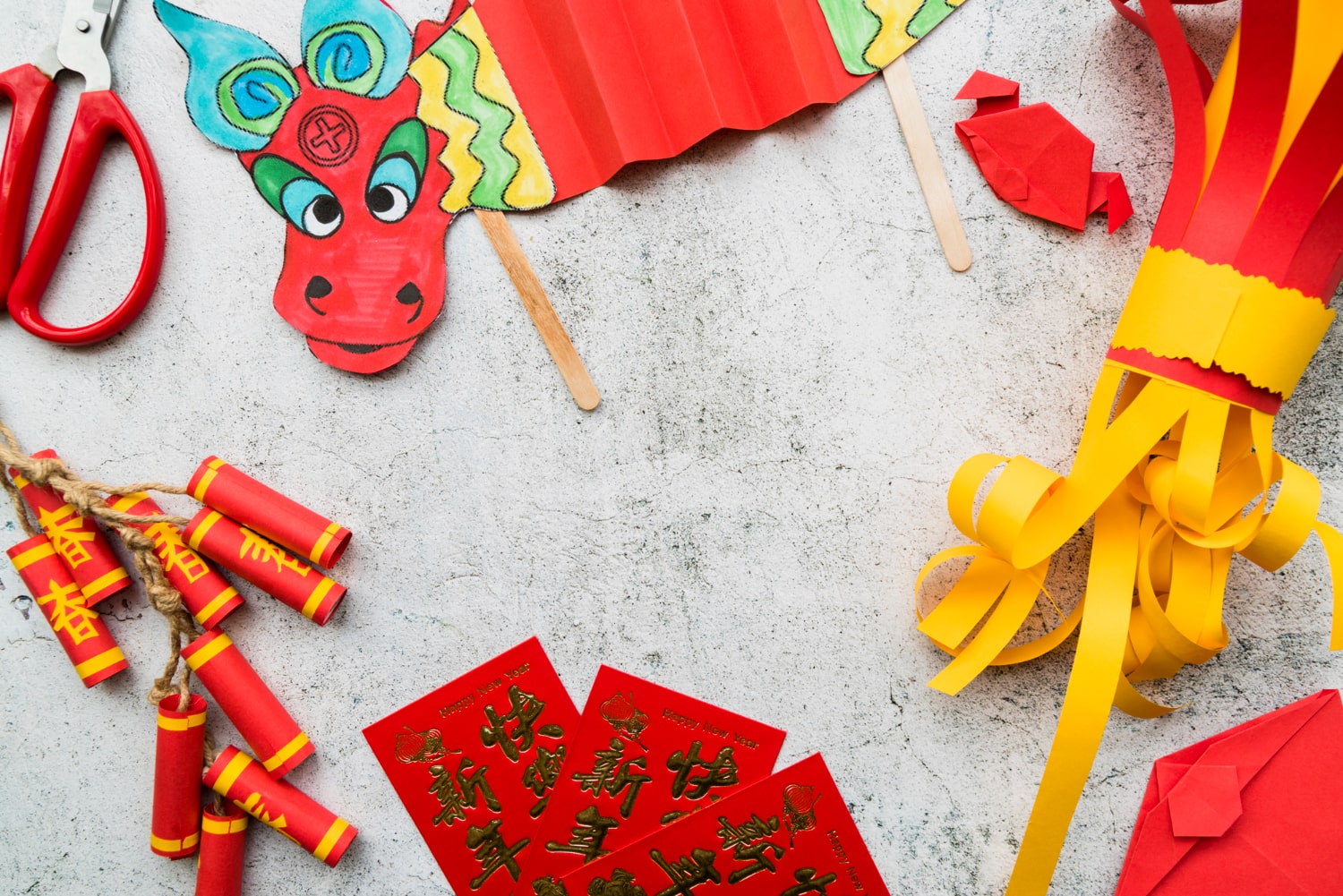
40 interesting facts about Chinese New Year
- 👁️ 271
Chinese New Year, also known as the Spring Festival or Lunar New Year, is the most significant traditional Chinese holiday. It marks the beginning of the new year according to the Chinese lunar calendar, and it’s a time for family gatherings, feasting, and various traditional and cultural activities. The festival’s date changes annually based on the lunar calendar, and the celebrations typically last for 15 days, culminating in the Lantern Festival. Rich in history, customs, and symbolism, Chinese New Year is celebrated not only in China but also in many countries with significant Chinese communities. Here are some intriguing facts about this vibrant and culturally rich festival:
- Chinese New Year is based on the lunar calendar, and the date changes every year.
- Each year is associated with one of the 12 animals in the Chinese zodiac.
- Red is considered a lucky colour and is widely used in decorations and clothing during the festival.
- It is the longest public holiday in China, lasting for seven to fifteen days.
- Families gather for a reunion dinner on Chinese New Year’s Eve, known as “Nian Ye Fan.”
- Fireworks and firecrackers are commonly used to scare away evil spirits.
- Cleaning the house before the new year is believed to sweep away bad luck.
- People avoid cleaning on the first day of the new year to prevent sweeping away good luck.
- Children often receive red envelopes filled with money as a symbol of good luck and prosperity.
- Various traditional foods are enjoyed, each symbolising different wishes for the new year.
- The Lantern Festival marks the end of the Chinese New Year celebrations.
- Dragon and lion dances are common performances during the festivities.
- The Spring Festival travel rush, known as “Chunyun,” is the world’s largest annual human migration.
- Certain words are avoided during the celebrations as they may sound like words for bad luck.
- The Chinese New Year celebration is the world’s largest usage of fireworks.
- People often wear new clothes during the festival to symbolise a fresh start.
- It is a time to honour ancestors, and offerings are made at family altars.
- The festival’s traditional greeting is “Gong Xi Fa Cai” in Mandarin, meaning “Wishing you prosperity.”
- Various superstitions and taboos are observed, including avoiding the use of sharp objects on New Year’s Day.
- Traditional Chinese medicines and herbs are often used in dishes to promote health.
- The Nian monster, a mythical beast, is a common folklore tale associated with the origin of the festival.
- Chinese New Year celebrations occur in many countries beyond China, including Singapore, Malaysia, and Indonesia.
- The colour white is typically avoided as it’s associated with mourning.
- Fish is a common dish, symbolising abundance, but it’s often left unfinished to symbolise surplus.
- Many businesses close for the duration of the holiday, significantly impacting the economy.
- Oranges and tangerines are given as gifts, symbolising good luck and wealth.
- The day before Chinese New Year is considered the birthday of the Kitchen God.
- Certain numbers, like 8, are considered lucky, while others, like 4, are considered unlucky.
- Zodiac compatibility plays a role in many aspects of Chinese culture, including during the new year.
- Long noodles are often eaten to symbolise a long and healthy life.
- Flowers and plants, such as plum blossoms and bamboo, are used to decorate homes.
- The festival has influenced other Lunar New Year celebrations in Asian cultures.
- Each of the 15 days of celebration has specific customs and significance.
- Some people choose to celebrate the new year by going vegetarian or vegan.
- The Chinese New Year Gala, a state-sponsored event broadcasted on television, is one of the most-watched programs in China.
- It’s common to settle debts before the new year, starting fresh without owing money.
- Traditional markets and temple fairs are held in various places, showcasing crafts, foods, and performances.
- Various regions and ethnic groups in China have unique ways of celebrating the festival.
- Hongbao, or red envelopes, are now often sent digitally through platforms like WeChat.
- The Year of the Rat is considered the start of a new zodiac cycle.
Chinese New Year is not merely a festival but a rich tapestry of traditions, beliefs, and practices that encompass various aspects of life, culture, and family. It’s a time of renewal, reflection, and connection, filled with symbols and customs that have evolved over thousands of years. Whether you partake in the celebrations yourself or observe from afar, the beauty, complexity, and unity of Chinese New Year offer a fascinating insight into Chinese culture and heritage. The enduring significance of these traditions and the blend of the ancient with the modern ensures that Chinese New Year continues to be a vibrant and essential part of the global cultural landscape.
Chinese New Year, also known as the Spring Festival or Lunar New Year, is the most significant traditional Chinese holiday. It marks the beginning of the new year according to the Chinese lunar calendar, and it’s a time for family gatherings, feasting, and various traditional and cultural activities. The festival’s…